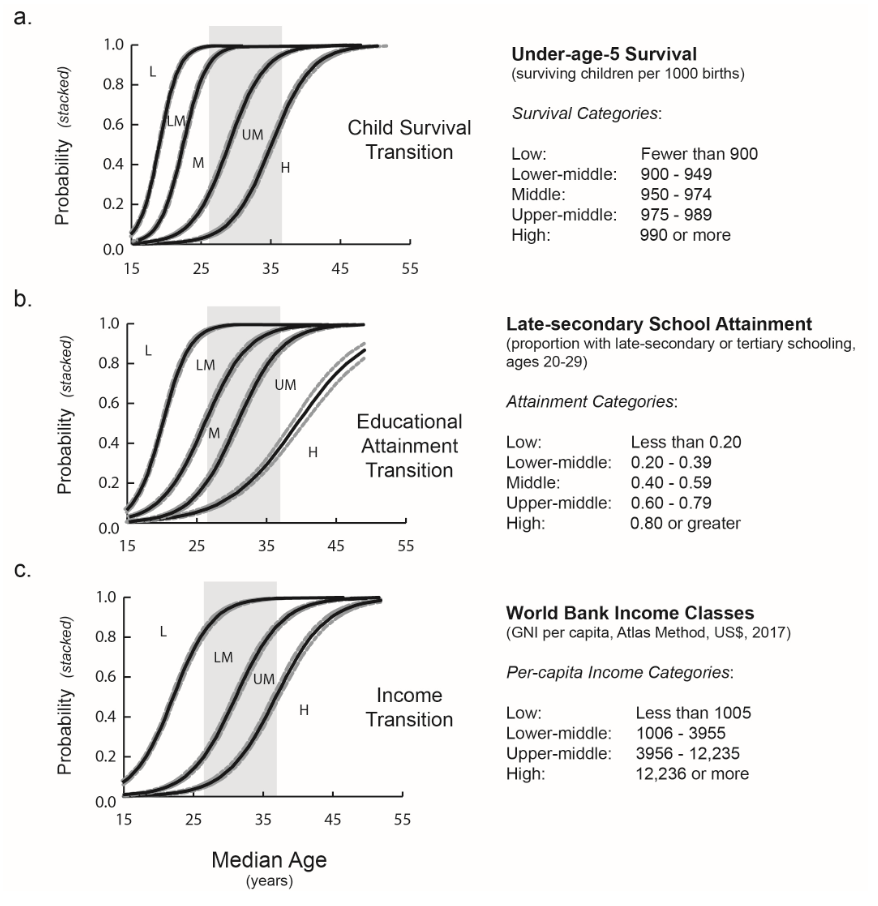 This article is part of the World Economic Forum’s Geostrategy platform
This article is part of the World Economic Forum’s Geostrategy platform
Last year, 2018, marked the 60th anniversary of a landmark publication by a pair of academic social scientists who first recognized the close relationship between population age structure (the distribution of a country’s population, by age) and development, writes Richard Cincotta in the Wilson Center’s New Security Beat, Does demographic change set the pace of development? [to read full article, click here on MORE]
[Graph on left] The statistical method used to produce the age-structural timelines (logistic regression) shown here, works with categorical data, rather than individual data points. So, to show the pace of development on age-structural timelines, each of the three basic transitions—child survival, educational attainment, and income—are divided into a series of consecutive categories.
For example, the income transition (c., bottom graph) is represented by the World Bank’s low, lower-medium, upper-medium, and high-income categories. Similarly, the child survival transition (a.) is divided into five survival categories, and the educational attainment transition (b.) into five attainment categories.
Unlike historic timelines, each age-structural timeline is spanned by a series of curves. Each curve shows when—in terms of median age—countries are likely to achieve that category. The next curve (to the right in the series) shows how rapidly, in terms of progress in median age, countries are likely to move into the next higher category.

